Nevsun Resources (TSX: NSU; NYSE-AM: NSU) has a busy year ahead. In early April, the mid-tier base metals company released a prefeasibility study for the Cukaru Peki Upper Zone, part of its 213 sq. km Timok copper-gold project near Bor, Serbia.
This year, it intends to start work on a feasibility study, continue exploring and calculate a resource estimate on its joint-ventured Cukaru Peki Lower Zone.
According to the new study, Nevsun could produce 1.7 billion lb. payable copper over a 10-year mine life at Timok’s Upper Zone via sub-level caving. The project would require US$574 million in pre-production capital and a conventional plant capable of producing 3.25 million tonnes per year of copper concentrate. It has an after-tax net asset value of US$1.8 billion at an 8% discount rate and an 80% after-tax internal rate of return.
The deposit is located within the central zone of the Timok magmatic complex. The Upper Zone is characterized by high-sulphidation mineralization comprising a single zone at depths ranging from 400 metres to more than 800 metres. It contains 27.1 million probable tonnes grading 3.3% copper and 2.1 grams gold for 890,000 tonnes copper and 1.8 million oz. gold.
Recently, Nevsun received a permit for an exploration decline at Timok. It has begun preparatory work, including contracts for building the decline, which it expects will take two years to reach the Upper Zone orebody. Nevsun is targeting 2022 for initial production.
Nevsun’s prefeasibility study outlines a staged ramp-up with a lower mining rate in the early years, as well as smaller surface facilities that Nevsun would expand as mining rates increase.
“In essence, the ramp-up scenario represents an opportunity to save capital and reduce operational risk in the initial years while maintaining the compelling economics of the project,” Nevsun CEO Peter Kukielski says in an interview with The Northern Miner.

Core samples from Nevsun’s Timok project in Serbia. Credit: Nevsun Resources.
The ramp-up would also lower arsenic ore content in the early years of production and cut initial capital by US$100 million.
Over the mine life, arsenic content at the Upper Zone is pegged at 1.4%, which Kukielski says is “relatively high, but low compared to other orebodies globally, like in Bulgaria or Chile.” As a result, Nevsun could make two concentrates, one with higher amounts of arsenic and one grading less than 0.5% arsenic. It could also sell the high arsenic component to specialized smelters and cut out treatment charges and arsenic penalties.
Earlier this year, Nevsun finished a US$20-million drill program in the Lower Zone and is developing a resource estimate it intends to release in the next couple of months.
The Lower Zone has porphyry-type mineralization. Highlights from the campaign include 557 metres grading 1% copper and 0.2 gram gold from 1,310 metres downhole and 312 metres grading 1.06% copper and 0.21 gram gold from 1,583 metres downhole.
The project is a joint venture between Nevsun and Freeport-McMoRan (NYSE: FCX), wherein Nevsun owns 60.4% of the Lower Zone. If Nevsun completes a feasibility study on either Zone, its ownership will drop to 46%.
“As one exposes value, 46% of a larger value is worth much more than 60% of something of limited value,” Kukielski says.
The zone appears limited southeast and southwest, but open north and south. Mineralization at the top of the Lower Zone occurs at depths ranging from 1,400 metres downhole in the west to 750 metres downhole in the east. The full vertical extent of the zone is unknown. After the resource estimate, Nevsun and Freeport will consider infill drilling the Lower Zone.

Drilling at Nevsun’s Timok copper-gold project in Serbia. Credit: Nevsun Resources.
“It’s fair to say we’re pretty excited about the potential of the Lower Zone because we believe it represents a store of value for us in an environment where large, high-quality and well-located copper deposits are rare as heck,” Kukielski says.
For the year, the company has 12,500 metres of drilling planned for following up on a zone it recently found 500 metres east of the Upper Zone. Mineralization at the zone occurs over 0.06 sq. km and is similar to the Upper Zone.
Assays from the new zone include 27 metres grading 2.93% copper and 2.54 grams gold from 396 metres downhole, and 18 metres grading 3.1% copper and 0.8 gram gold from 569 metres downhole.
Also in 2018, the company will spend US$5 million following up on brownfields exploration within 5 km of the Lower Zone. Timok is 5 km south of the Serbian-owned RTB Bor copper mine complex, which has produced 144 million tonnes of high-sulphidation ore from 27 orebodies.
“We feel pretty good about discovering additional high-grade mineralization around the Upper Zone,” Kukielski says. “If we find something of the scale of our current project, it’s a game changer.”
The company also has its Bisha copper-zinc mine, 150 km west of Asmara, Eritrea. The mine produced a gold-silver doré from 2010 to 2013 before switching to copper via an $11-million expansion project. It added zinc production in October 2016. In 2017, Bisha produced 210.4 million lb. zinc concentrate and 17.5 million lb. copper concentrate.
Shares of Nevsun are valued at $3.15 with a 52-week range of $2.49 to $3.48. The company has a $940-million market capitalization.
“Timok is an incredibly high-grade, high-return, fully executable copper project in a supportive jurisdiction,” Kukielski says. “We’re excited to get moving with our exploration decline and with the development of what we consider to be an extraordinary project.

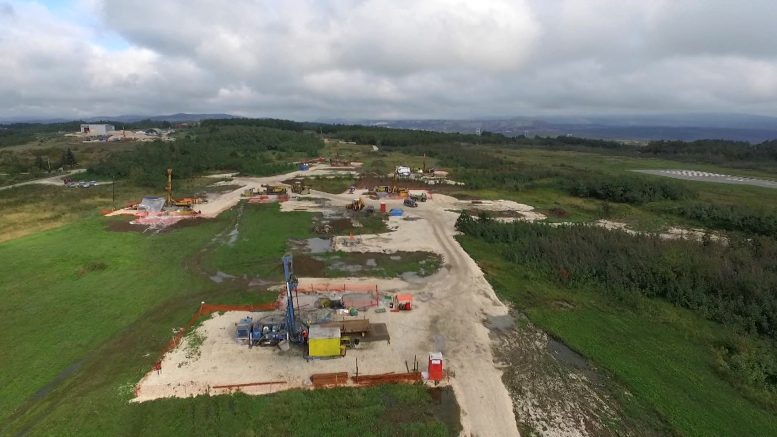
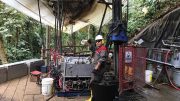
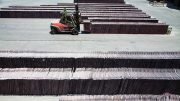
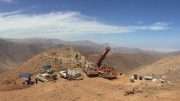
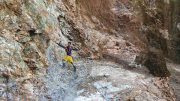
Be the first to comment on "Nevsun completes prefeasibility at Timok"